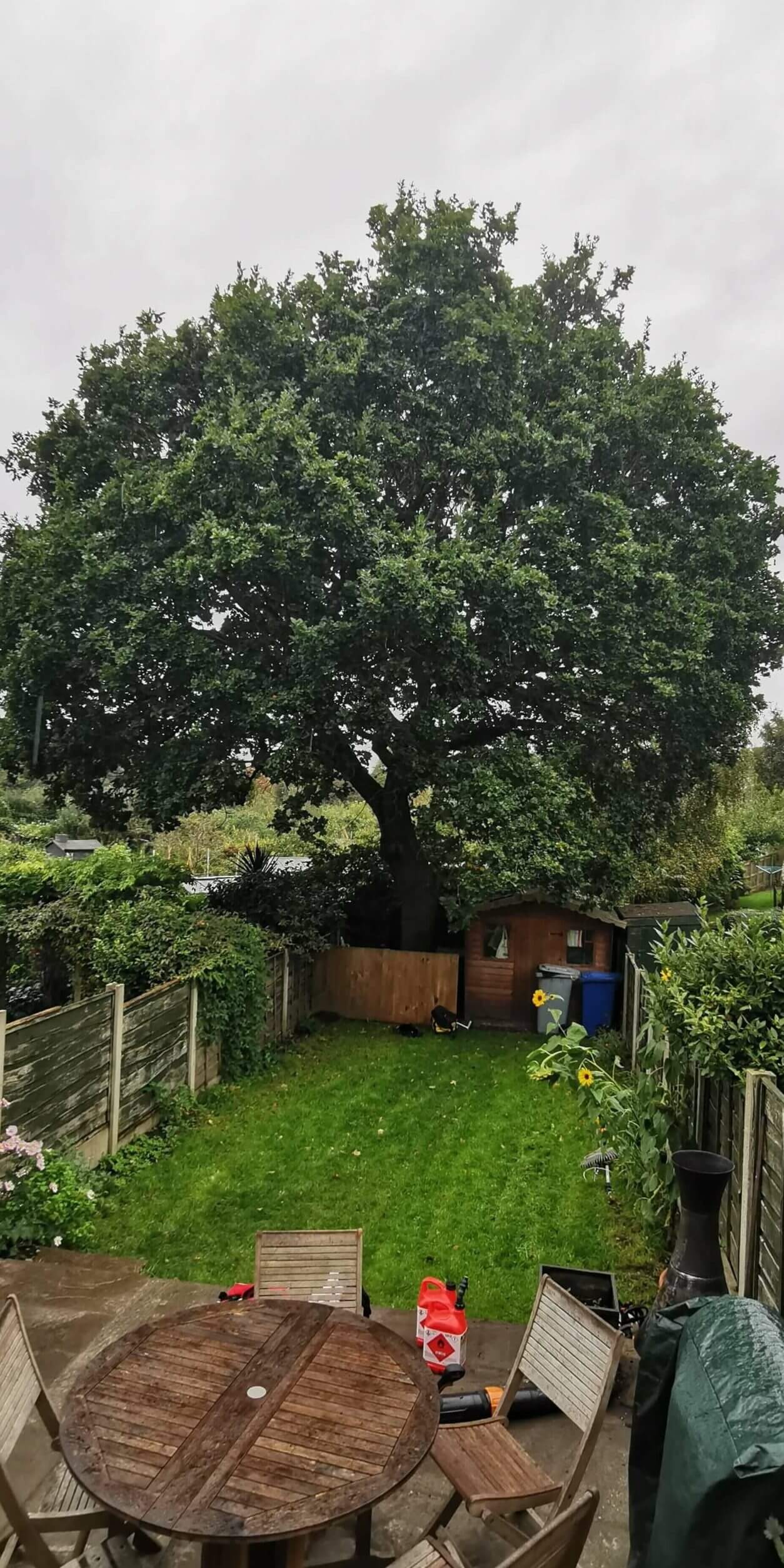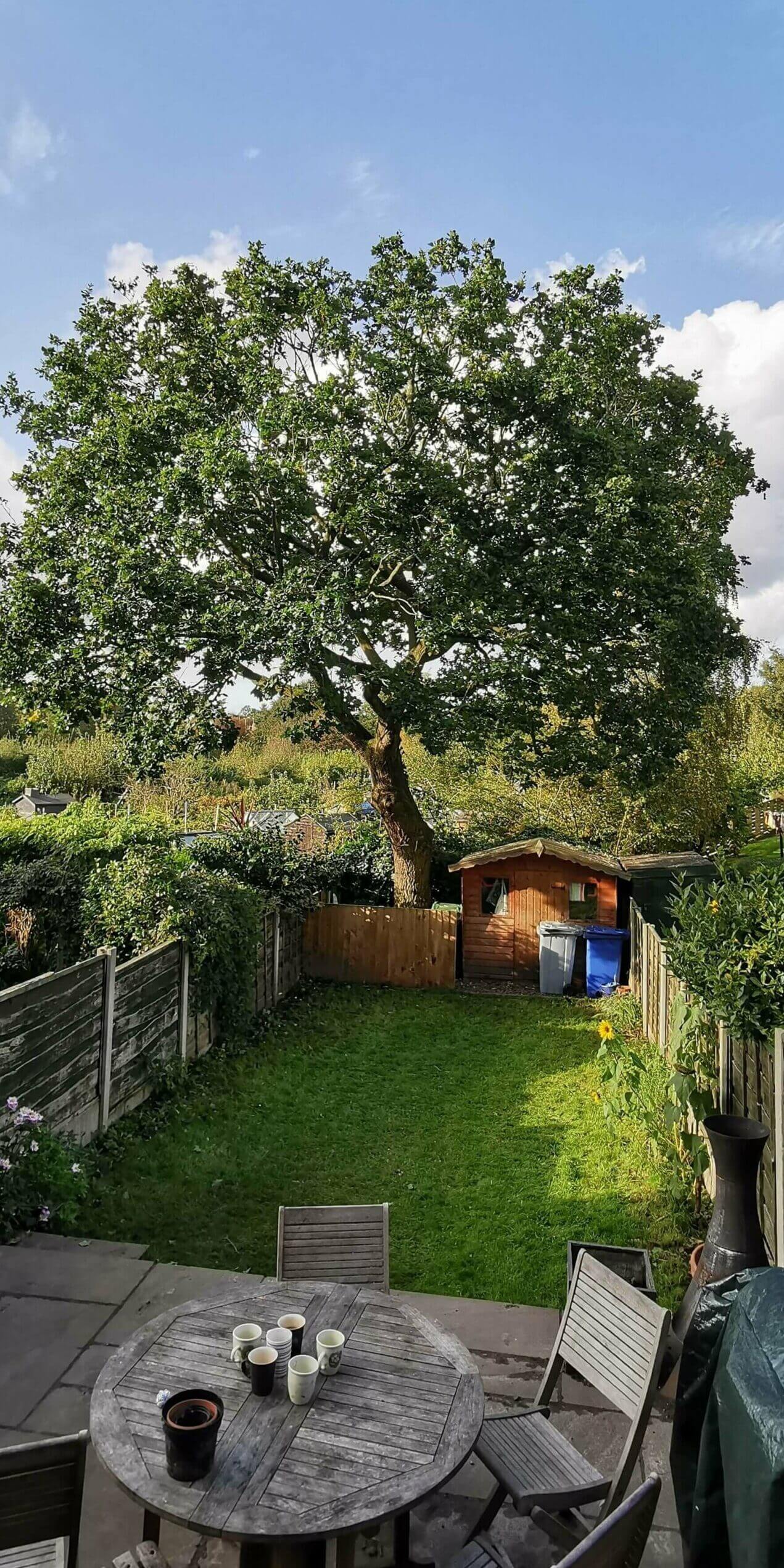This week, we carried out selective reduction work on a mature Oak tree in Bowdon, an area known for its established gardens and large trees. Oak trees are common in the local landscape and, when well managed, can remain healthy and structurally sound for decades.
Our client had a long-standing Oak at the rear of their property. While the tree was in good health, its canopy had expanded significantly in recent years and had begun to dominate the space. The garden below was heavily shaded, and parts of the lower canopy were starting to encroach slightly into a neighbouring property.
The Brief
Following an initial site visit and consultation, we agreed on the following scope of works:
Reduce the overall canopy by approximately 1.5 to 2 metres, to bring the tree back in proportion with the space
Thin the crown, allowing more light to reach the garden below
Lift selected lower limbs to improve clearance and reduce encroachment over the boundary
Remove any visible deadwood, improving safety and tree hygiene
This type of work is designed to reduce the tree’s overall impact while preserving its structure, health and character. The Oak was not subject to a Tree Preservation Order, and the property was not in a conservation area, so no permissions were required prior to starting.
Carrying Out the Work
All works were carried out using rope and harness by a qualified climbing arborist, supported by a trained ground team. Care was taken to ensure all cuts were made in accordance with BS3998:2010 (Tree Work – Recommendations), avoiding large wounds and ensuring a natural-looking end result.
We reduced the outer edges of the canopy by up to 2 metres, using a combination of drop-crotch and lateral cuts to maintain the tree’s natural form. Crown thinning involved selectively removing crossing, congested or poorly formed branches — opening up the canopy to allow more light through without drastically reducing leaf cover.
We also lifted several lower limbs on the garden side and boundary line, improving clearance and tidying the overall shape. Deadwood was removed throughout the crown and processed on the ground for safe disposal.
The job took a single day to complete, with all arisings removed from site and the garden left clean and tidy.
Outcome
The finished tree retained its full character and natural form, but with a lighter, better-proportioned canopy that now allows significantly more sunlight into the garden. The work also improved clearance along the boundary, helping to prevent any future neighbourly issues.
The client was pleased with how much brighter and more open the garden felt immediately after the work — especially given the tree’s size and position.
Why Oaks Matter
The English Oak (Quercus robur) is a key species in the UK landscape, known for its longevity, ecological value, and structural strength. According to the Woodland Trust, “the English oak supports more life than any other native tree species – even its fallen leaves support biodiversity.”
As tree surgeons, we take pride in working on Oaks responsibly. Managing mature specimens like this one helps ensure their long-term health and safety, particularly in built environments where they need to coexist with homes, gardens, and infrastructure.
Considering Work on a Mature Tree?
If you have a large tree in your garden and are unsure whether it needs management — or whether it might be protected — we can help.
We offer free site assessments across South Manchester and Greater Manchester, and can advise on pruning, safety, light levels, and any planning requirements such as TPOs or conservation area restrictions.
Whether it’s an Oak, Beech, Hornbeam or any other species, we carry out thoughtful reductions that keep trees healthy and gardens usable.
If you’d like a quote for tree pruning, removals or hedge cutting, call Leo on 0161 327 3011


